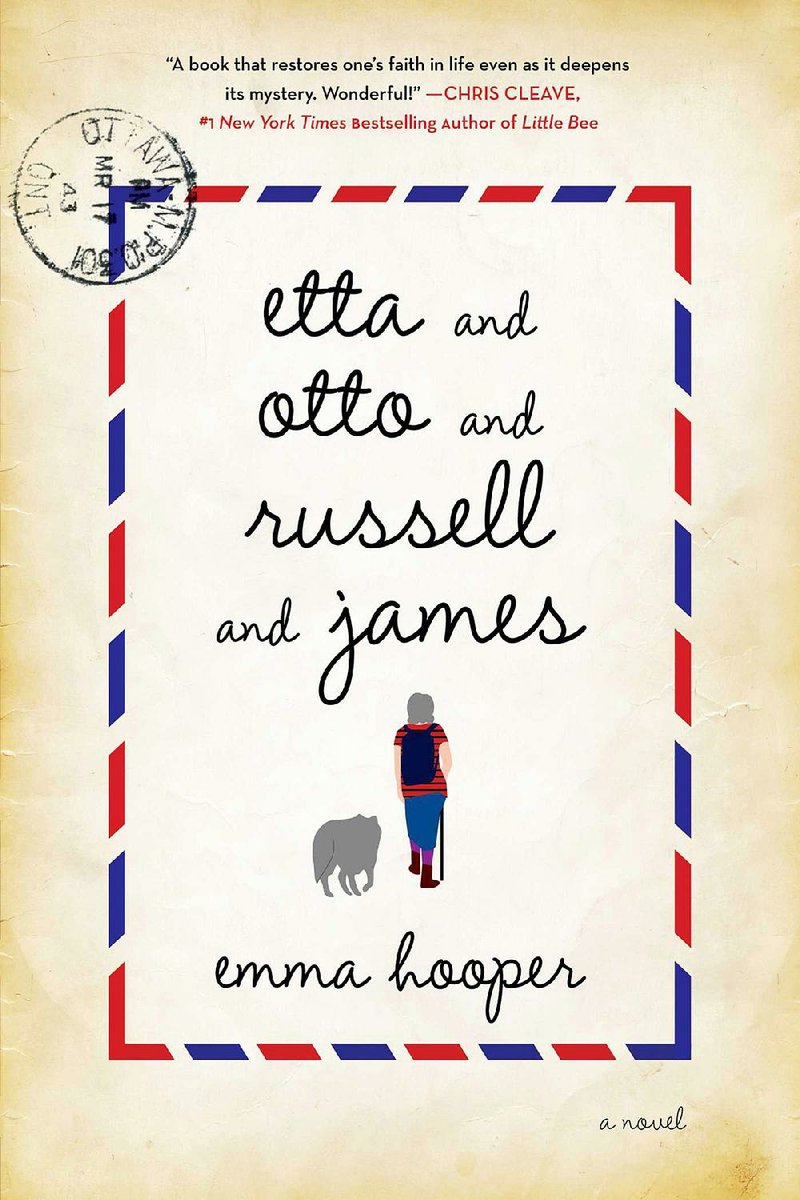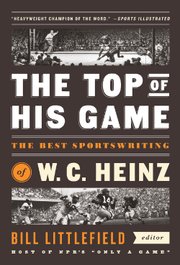It is the nature of a mind to wander and to sometimes be lost. We watch a movie like Still Alice or Away From Her, and we think about how sad it must be to be disconnected from our memories. As much as life coaches urge us to occupy the moment, most of us find the prospect of having only the present in which to live terrifying.
But Etta, who is unarguably the prime voice of Canadian writer Emma Hooper's sweet and charming first novel, Etta and Otto and Russell and James (Simon & Schuster, $26), does not seem afraid.
She has in her pocket a list of names that matter to her, people like her husband, Otto, and their neighbor Russell, who grew up like a brother to Otto, whom Etta might have married. Russell is an old bachelor whose primary occupation these days is watching for deer that never quite come. The other names on her list -- parents, siblings, a stillborn child-- are deceased. At the top she has written her own name. From time to time she fingers the list like a talisman.
Some may count it as a flaw that we do not quite know why Etta, 83, has started out walking from her home in Saskatchewan, determined to see the Atlantic Ocean. It is quite possible that Hooper -- who performs with tape loops as a solo violist under the nom de musique "Waitress for Bees" and lectures in both creative writing and commercial music at Bath Spa University in England -- is being purposefully terse and elliptical because she understands the power of elision, that the imagination of the reader will fill the gaps. The reasons for Etta's urgency matter less than the fact of that urgency. She has always wanted to see the water.
Otto cannot go after her. She has left a note, in which she promises to try to remember to come back. She has left him recipes to follow, scribbled in blue ink 60 years before. What he can do is wait, bake cinnamon buns that get better with each iteration and write letters he never sends, but stacks neatly in a pile, waiting for her return. After he tells Russell that Etta has gone, his friend (and Etta's long-ago lover, when Otto was overseas fighting the Nazis in World War II) goes after her. Despite a leg mangled in a boyhood accident, Russell is an expert tracker.
Meanwhile, Etta is joined on her journey by James, a mystical coyote who provides her with protection and companionship but primarily serves as a sounding board off which she can bounce memories and reflections. Hooper slips us gracefully through time, back to frontier childhoods and a one-room schoolhouse, through Etta and Otto's epistolary wartime romance. About three-quarters of the way through, Russell, having caught up with Etta, veers off on a frolic of his own, a development that redistributes the book's ballast a bit.
Otto begins to make papier mache animals, starting with deer for Russell and a guinea pig to keep a new pet company. Soon he has populated the farmhouse's yard, and people are driving out to see it. Otto is getting lost the same as Etta, surfacing from time to time to breathe in the sharp air of connection -- he has become an outsider artist as Etta has become a beloved eccentric with a national tabloid following. After long and relatively typical lives, they both teeter obliviously on the brink of celebrity.
While there's little doubt that Etta's journey is an actual Forrest Gump-like trek across the continent, it's also a metaphor for her increasingly difficult inner expedition, a haphazard voyage where she drifts between moments of lucidity and hallucination, between memory and forgetting, between finally becoming herself and a kind of disintegration that prefigures her becoming part of a universal consciousness. Ultimately the borders between people are as permeable as those between provinces -- we move from Etta to Otto to Russell as easily as we pass from Ontario to Quebec.
It's painful near the end, but Hooper never lapses into sentimentality. The author keeps putting sentence after sentence, word after word, in the same manner that Etta takes step after step, no matter how bloodied and blistered her feet become.
In the end, the why isn't so important. It is the moving forward. "We're all scared, most of the time," Etta writes to Otto. "Life would be worthless if we weren't. Be scared, and then jump into that fear. Again and again."
HEINZ'S BEST
Tony Kornheiser once said this was a golden age for sportswriters. But, he quickly added, don't confuse that with the golden age of sportswriting. Sportswriting is not the province of stylists as it once was, for reasons that might have little to do with the quality of mind pursuing the profession. Thanks to social media, the 24-hour news cycle and the ubiquity of ESPN, sportswriters these days tend to chase breaking scoops and follow up with instant nuance-dismissing "hot takes." It's more about access and metrics and getting on the TV shout shows than it is about actually writing about sports.
But more than nostalgia recommends The Top of His Game: The Best Sportswriting of W.C. Heinz ($29.95), which the Library of America brought out to mark the centenary of W.C. Heinz, possibly the best literary sportswriter you've never read.
Heinz, who is often compared to Ernest Hemingway, wrote with meter and rhythm and empathy, alternating terse tough sentences with lyrical runs that compounded into emotional chords. He started out as a city reporter, covering fires and car crashes for the (New York) Sun in the 1930s, went to Europe as the newspaper's war correspondent in 1944 and afterward returned to write "human interest" sports columns until the Sun closed in 1950.
After that, he did freelance magazine pieces for Esquire, Life, Look, Collier's and Cosmopolitan (which was a general interest publication before Helen Gurley Brown re-invented it as a magazine for careerist single women in 1965), wrote boxing novel The Professional (which Hemingway called "the only good novel I've ever read about a fighter, and an excellent novel in its own right") and co-wrote (under the pen name Richard Hooker) the novel MAS*H, which became a Robert Altman film and a long-running television series.
Most of the book features what we would today call long-form profiles and stories (such as "Day of the Fight," a 6,000-word piece about the hours leading up to Rocky Graziano's first fight with Tony Zale under the lights at Yankee Stadium in 1946). Probably the best -- and best known -- piece in the book is Heinz' 1949 column "Death of a Racehorse," a model of economical power that, in less than 1,000 words, tells the heartbreaking story of Air Lift, an unfortunate 2-year-old colt whose brother won the Triple Crown and whose father won the Kentucky Derby, who made it only through the first turn of his first race:
"He broke a leg!" somebody, holding binoculars to his eyes, shouted in the press box. "He broke a leg!"
Down below they were roaring for the rest, coming down the stretch now, but in the infield men were running toward the turn, running toward the colt and the boy standing beside him, alone. There was a station wagon moving around the track toward them, and then, in a moment, the big green van that they call the horse ambulance.
"[Dave] Gorman [Air Lift's jockey] was crying like a baby," one of them, coming out of the jockey room, said. "He said he must have stepped in a hole, but you should have seen him crying."
"It's his left front ankle," Dr. J.G. Catlett, the veterinarian, was saying. "It's a compound fracture; and I'm waiting for confirmation from Mr. Hirsch to destroy him."
Catlett received his confirmation.
They had sponged off the colt, after they had given him the shot to deaden the pain, and now he stood, feeding quietly from some hay they had placed at his feet. In the distance you could hear the roar of the crowd in the grandstand, but beyond it and above it you could hear thunder and see the occasional flash of lightning ...
Then the heavens opened, the rain pouring down, the lightning flashing, and they rushed for the cover of the stables, leaving alone on his side near the pile of bricks, the rain running off his hide, dead an hour and a quarter after his first start, Air Lift, son of Bold Venture, full brother of Assault.
Among connoisseurs of sports writing, "Death of a Racehorse" is considered a contender for the greatest sports column ever written, and some have suggested it might be the best deadline-written piece ever to appear in an American newspaper. But if it's the pinnacle of Heinz' craft, the rest of the book evidences no real dropoff. In his introduction, Bill Littlefield, the book's editor and a National Public Radio host, notes that Heinz was "his own harshest critic" and in the scrapbooks in which he collected his work he would only occasionally note that a column was "Good." Very occasionally, usually when he was disappointed with the bulk of a column but liked a specific part, he'd write a little more.
"There is a pattern in the writing of W.C. Heinz that suggests that he was seldom satisfied with the work he's done, and that his curiosity and his imagination were too large to be contained within a column or a magazine piece or perhaps any form," Littlefield writes and the chronological arrangement of this volume argues that case. In 1979 he brought out a book called Once They Heard the Cheers in which he revisited many of the figures he'd written about over the years to flesh out and catch up on their stories.
These are excellent pieces -- there's hardly a false note struck in the book -- but they don't improve on what has gone before. No matter his own opinion of his work, Heinz was always quite a bit better than "good."
Email:
pmartin@arkansasonline.com
blooddirtangels.com
Style on 02/15/2015

